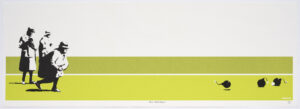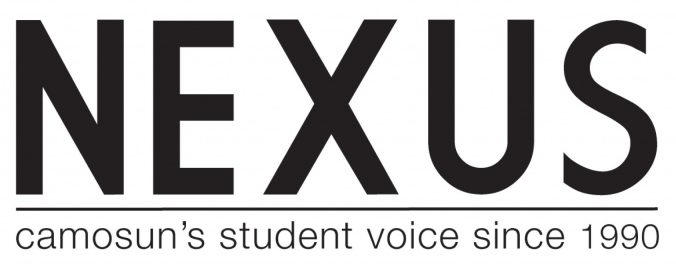From Warhol to Banksy looks at several artists across pop art and graffiti art and makes connections between the anti-establishment and anti-consumerist voice of both movements and their dissolution of the line between low and high art.
The exhibit—running now at The Art Gallery of Greater Victoria (AGGV)—is organized by the Kelowna Art Gallery and curated by Christine May, who worked with a private collector in the Okanagan to put together the show. The Kelowna Art Gallery then decided to offer it as a travelling exhibit to other galleries in Canada, and the AGGV took it on.
One of the main mediums pop artists worked with was printmaking, for its limited-edition value, ease of circulating images, graphic qualities, and bold colours.
“Prints were really important for pop artists, particularly Andy Warhol—it’s more about circulating works in mass numbers and disseminating them around the world, almost like a virus,” says AGGV chief curator and director of exhibitions Steven McNeil. “It’s a way of having the work take on a life of its own, travel around the world, and be seen in many different places at once.”

The pop-art movement—taking place in post-war 1960s North America—satirically regurgitated the bright colours, commanding text, and instantly gratifying nature of advertising that has been inundating Western culture since the Industrial Revolution.
“The work of art itself takes on the format and appearance of advertising,” says McNeil.
There is a strong element of graffiti in the show, he says, with several works from Banksy, a pseudonymous English artist who creates political graffiti-based street art, often utilizing stencils, and Mr. Brainwash, also a pseudonymous English artist, best known for graffiti works that bridge the gap between graffiti and fine art.
“A lot of the power behind graffiti art is the idea that it can be anonymous, appear overnight, and transform a public space that wasn’t intended to be a space for art, but suddenly becomes a space for art,” says McNeil. “There’s a lot of crossover to the way that earlier pop artists disseminated prints and had them spread across the world, and showed big numbers of the same repetitive image.”
Along with the Warhol pieces in the exhibit, there will also be works shown by American pop artists Tom Wesselmann and Roy Lichtenstein, who brought illustrations from comics and graphic novels into the fine-art world, reflecting popular culture and a piece of the average consumer’s life in the gallery. McNeil says the exhibit will also feature work by Japanese artist Takashi Murakami. (There is also a smaller companion exhibition running alongside From Warhol to Banksy—From Balzar to Hunt, a collection of pop art from British Columbia curated to complement the main exhibit that includes major work from Shawn Hunt, Joan Balzar, Audrey Riller, and more.)
“It’s quite flashy and pretty in the same way a commercial product would be,” he says. “It plays on animation and parts of Japanese culture that are related to pop art in the same way as the subjects that Roy Lichtenstein and Andy Warhol looked to—comic book characters and more popular life things.”
The exhibit will also see the first Victoria screening of the 2017 HBO documentary Brillo Box (3 ¢ off), directed by Lisanne Skyler.
“It is a documentary that looks to how one of [Andy Warhol’s] brillo box sculptures played a big role in a family’s life,” says McNeil. “They acquired one early on for a low value, and then these works took on much higher values over time. So it’s a documentary that really delves into the art market and how something bought at one point in someone’s life can have a big impact on their life later on.”
From Warhol to Banksy
Until Sunday, April 27
Art Gallery of Greater Victoria
aggv.ca
